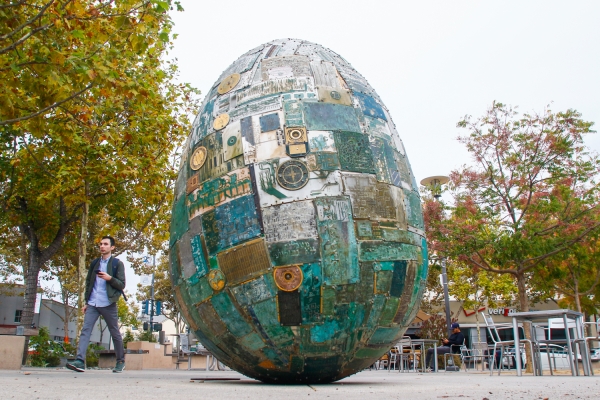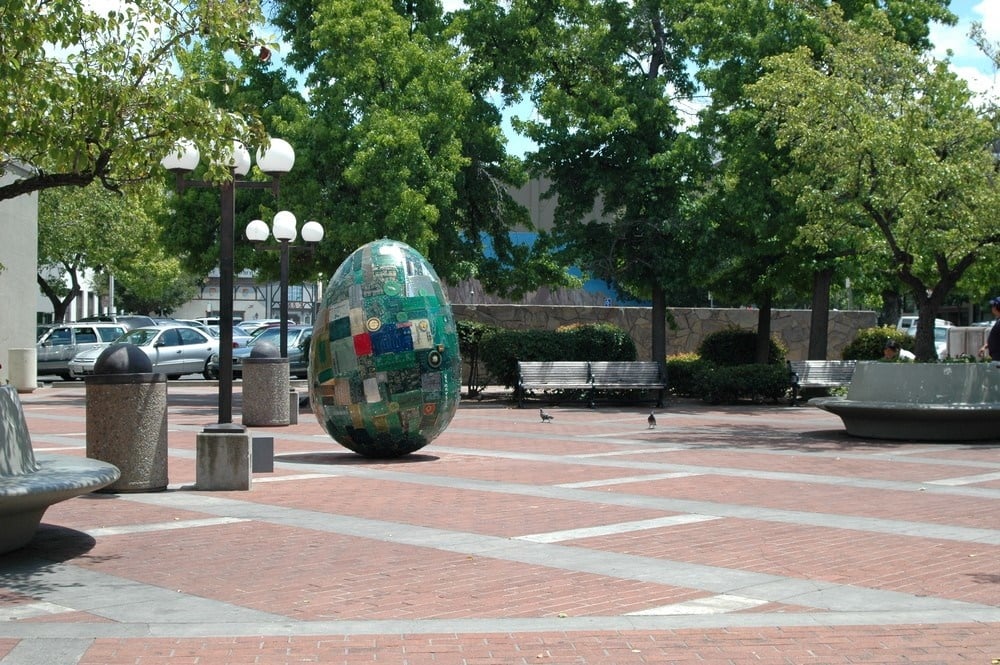Law & Politics
Palo Alto Wants to Tear Down a Giant Computer-Egg Sculpture—But the Artist Says It Violates Her Rights
Adriana Varella asserts that her work is protected under VARA.

Adriana Varella asserts that her work is protected under VARA.

Eileen Kinsella

The Visual Artists Rights Act, known as VARA, could be set for another key test later this month, if the city of Palo Alto, California moves ahead with plans to remove a public artwork. Digital DNA, a large egg-shaped sculpture made of computer keyboards, has been situated in a downtown plaza since 2005. But after 13 years and numerous costly repairs, the city now says the work is prone to damage and is too expensive to maintain.
The artist, Adriana Varella, asserts that the work is protected under VARA, and has enlisted art attorney Nicholas O’Donnell to plead her case. In a three-page letter to Palo Alto Mayor Greg Scharff dated January 31, O’Donnell writes that the city’s demand for Varella to remove the work (February 23 is the deadline) violates both her VARA rights and the city’s own deaccessioning policy.
The sculpture, which was commissioned in 2003, “addresses complicated themes of technology and public space in the very heart of Silicon Valley,” writes O’Donnell. “Since its installation it has become a beloved landmark.”
The letter references the popularity of the work on social media. We found numerous Instagram posts of the work from various users. Further, O’Donnell says the importance of the work is “inextricably related to the site on which it is located.”
Varella’s moral rights, O’Donnell claims, would be violated by the proposed removal of the sculpture. “The moment that the sculpture is removed, it will be destroyed, because it cannot be what it is anywhere else.”
O’Donnell cites Palo Alto’s own deaccession policy and notes that this is a “seldom-employed action that is taken only after issues such as Artists’ rights, public benefit, censorship, copyrights, and legal obligations have been carefully considered.”
A spokesperson for the Palo Alto mayor’s office told artnet News that there were more than 60 public meetings in which the artwork was on the agenda or discussed. The representative provided a copy of a 33-page staff report on the matter and noted that that the artwork is “made of a Styrofoam core with a fiberglass shell that has multiple circuit boards screwed into it.” Those materials make it vulnerable to the elements, according to the mayor’s office. “Despite our best efforts to prolong the life of the piece over the years, the materials are not suited to the outdoor environment,” the representative said.

According to the city, the artist has been paid $8,000 for multiple treatments she completed herself, as well as additional funds for hiring outside consultants. In late 2009, the city asserts, Varella coated the egg, and it began peeling within a few months. Then they hired a conservator to apply a new coating after consulting with the artist. The city outlines extensive efforts made to prolong the life of the piece, adding that “[d]eaccession is not something we take lightly.”
VARA underwent a recent key test in federal court in Brooklyn when a jury handed a preliminary victory to a group of graffiti and aerosol artists in a closely watched case that pitted the rights of street artists against those of a property developer. The six-person jury found that real estate developer Gerald Wolkoff and his related companies broke the law when, in 2014, he whitewashed the 5Pointz graffiti mecca in Long Island City in the middle of the night. However, the jury decision will serve only as a recommendation to the case’s presiding judge, Frederick Block, who has yet to hand down a final verdict and assess whether any damages must be paid.